Sycamore Maple
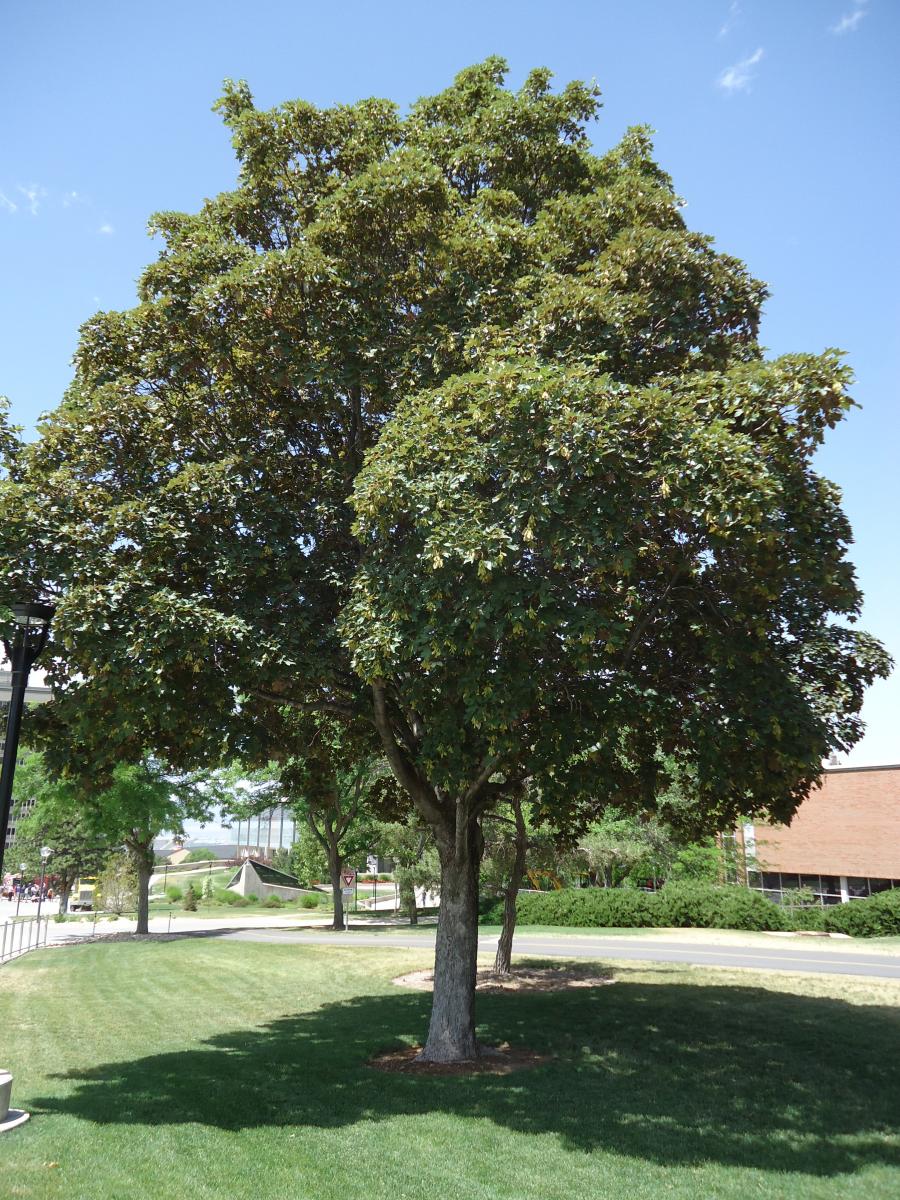
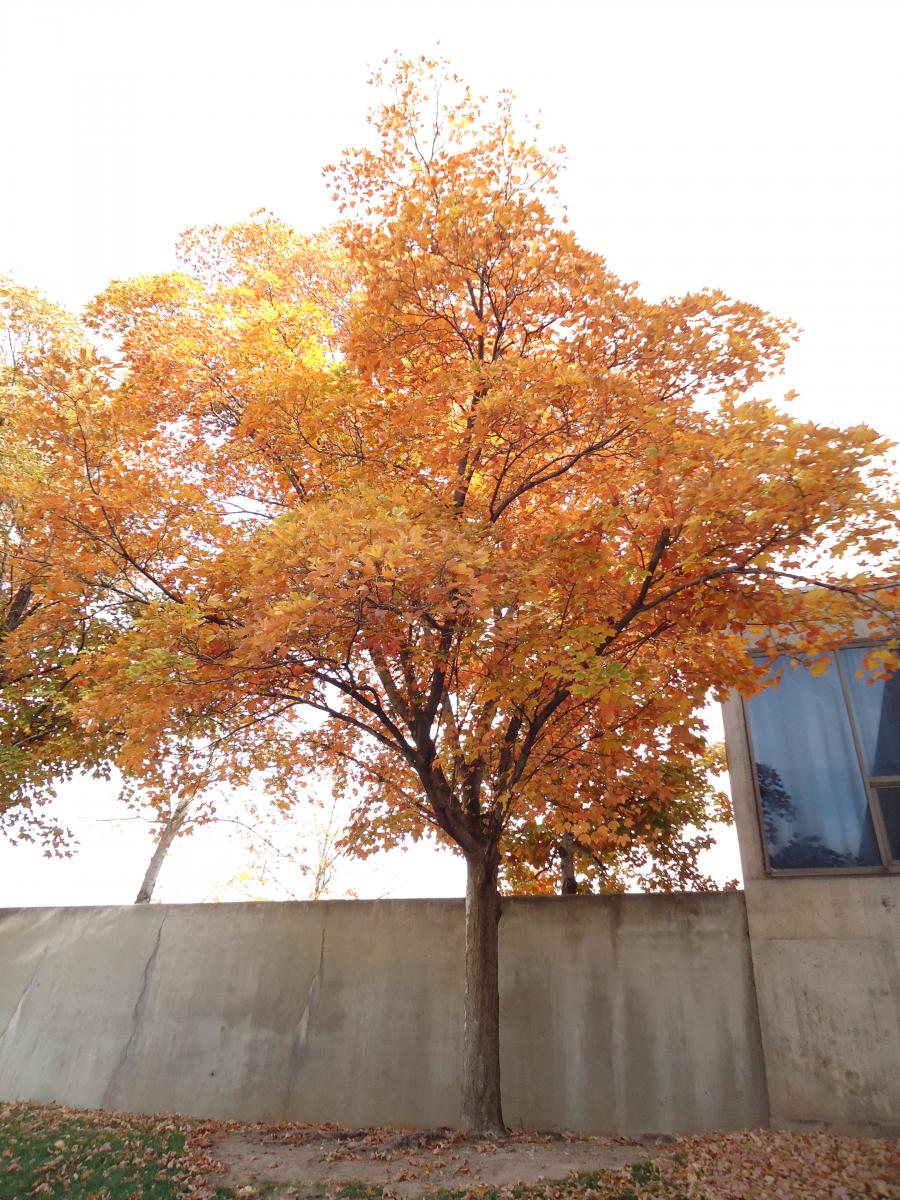
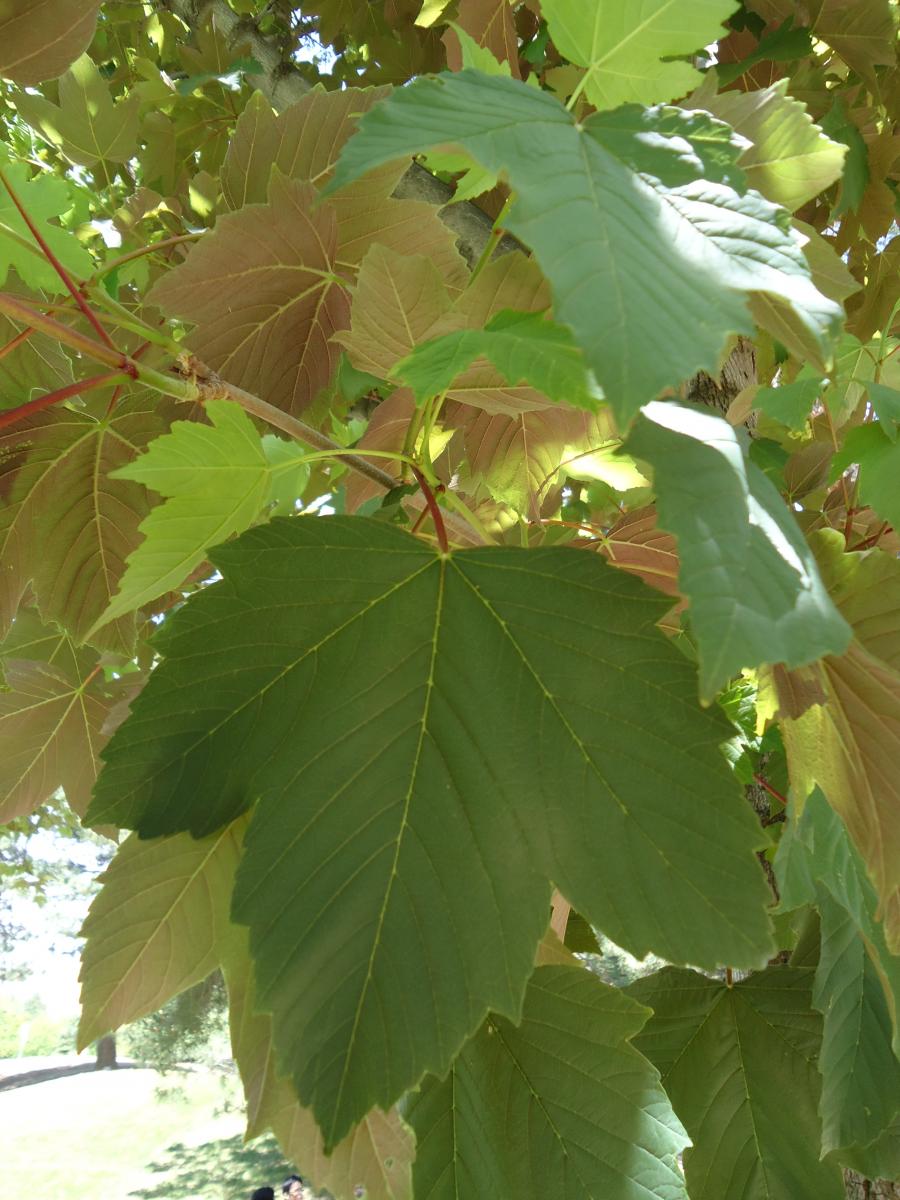
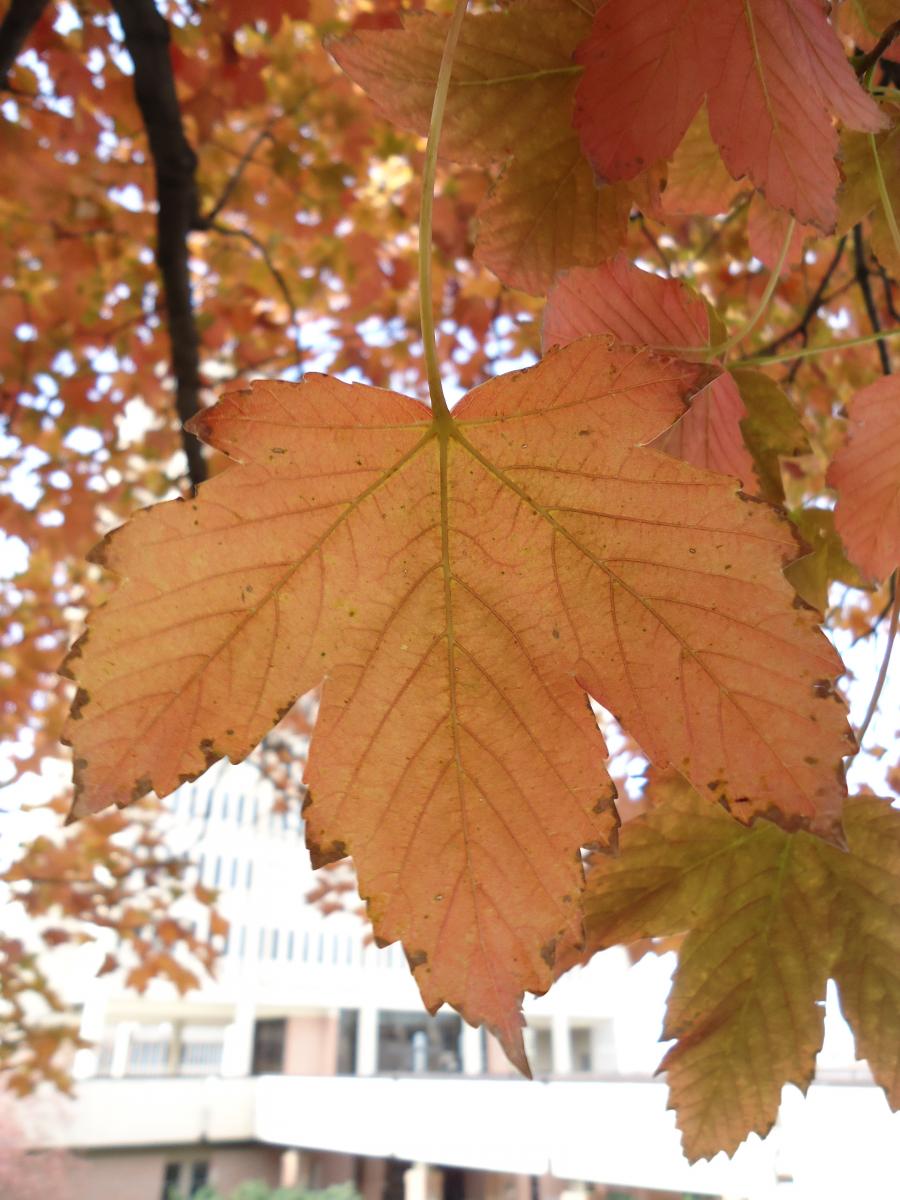

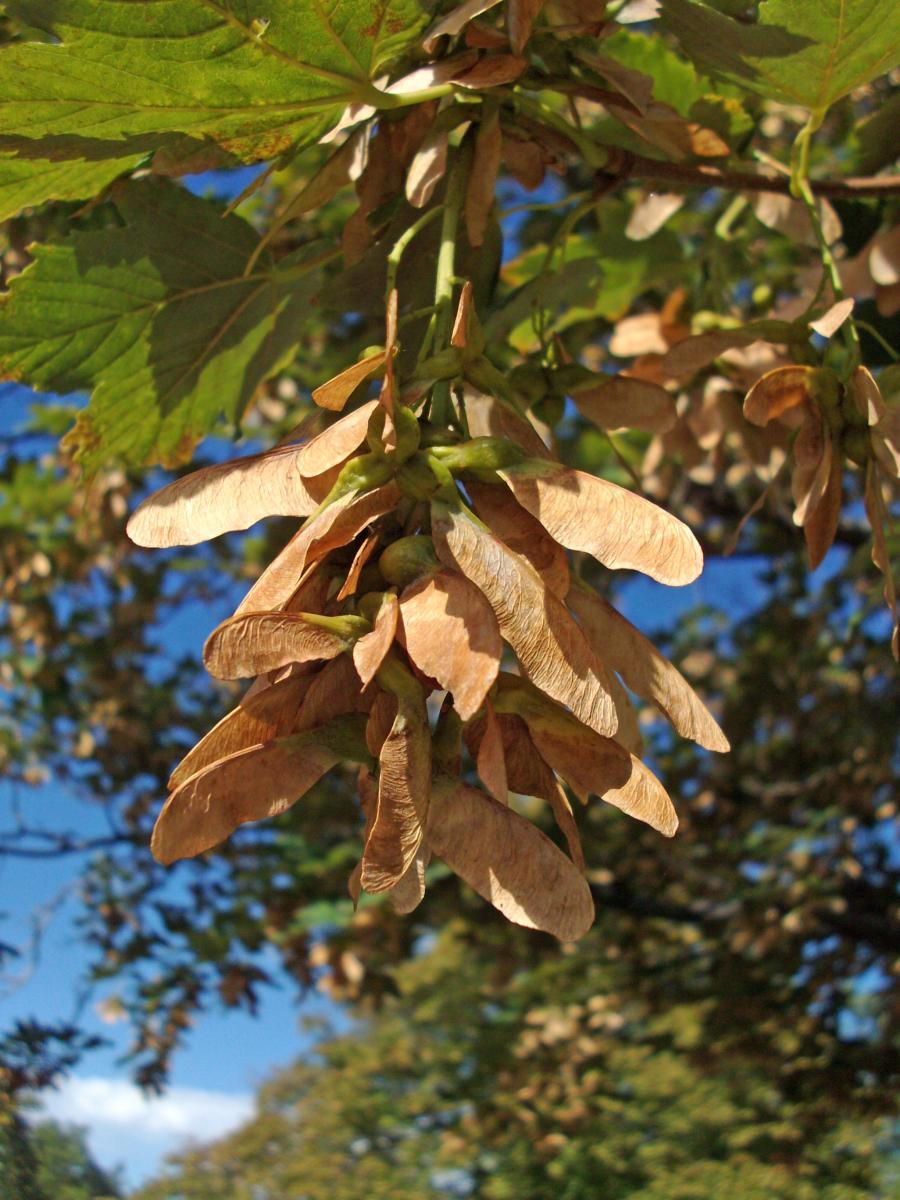
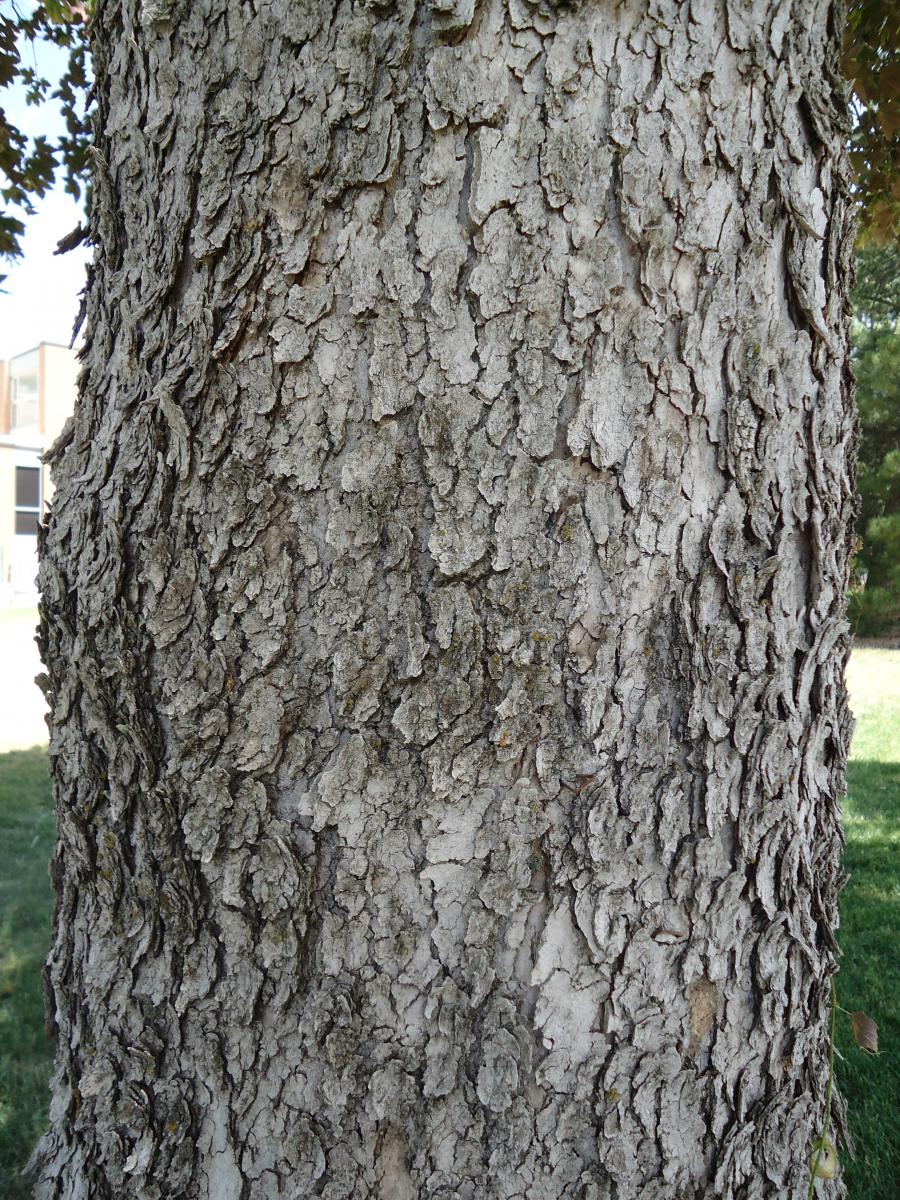
Acer pseudoplatanus
Leaves: Deciduous. Leaves have 3 to 5 lobes, 3 to 6 inches wide and sharply toothed. The middle 3 lobes are about equal in size and shape. Leaf edges have small teeth. Dark to medium green or purple depending on variety. Fall color not very impressive, dingy brown to yellow.
Bark/Twigs: Bark scaly and gray, flaking off to expose orangish brown inner bark. Buds on twigs remain green in winter.
Flowers/Fruit: Yellow-green flowers bloom in late spring (May) after the leaves emerge. Seeds (samaras) are 1 to 2 inches long each with a 60 degree angle between the pairs. The seeds form 6 to 12 inch long, drooping panicles or clusters.
Mature size and shape: Large. 40 to 60 feet high x 50 feet wide. Oval to rounded shape. Spread is usually ⅔ of height.
General information/special features: Plant in full sun to partial shade. Moist, well-drained soil preferred. Tolerates drought or dry conditions fairly well. Does not do well in continuously wet soils. Tolerant of salty soil.
Landscape use and maintenance: Large, good shade tree. Similar to Norway maple. Medium growing rate. Average maintenance. Seeds can be messy. Transplant in spring.
USDA Hardiness Zone: 4 to 7
Family/Origin: Aceraceae – Maple. Native to Europe and western Asia.
Campus Use: Common. Can be found south of the Kem Gardner Building (Bld 48) and north of the Film and Media Arts Building (Bld 36).
